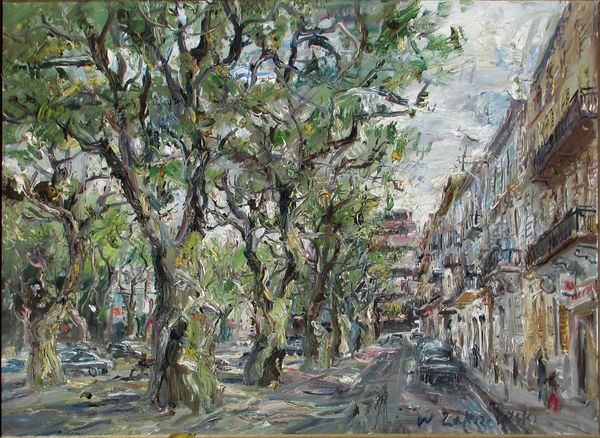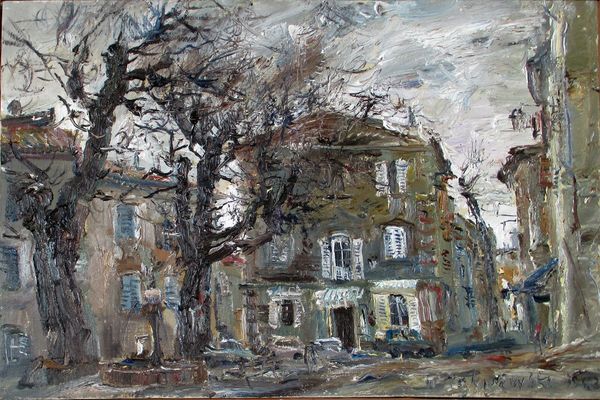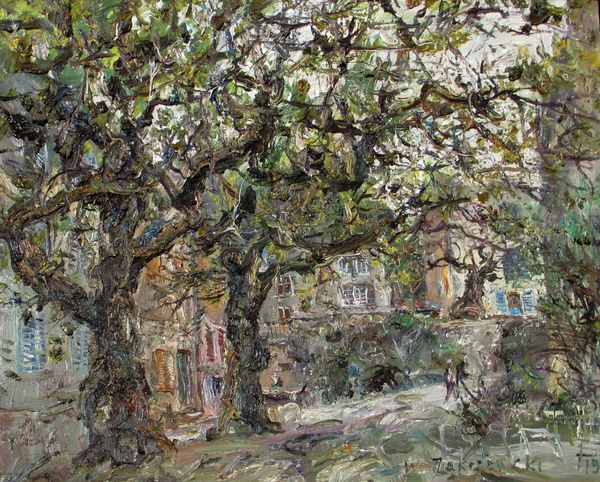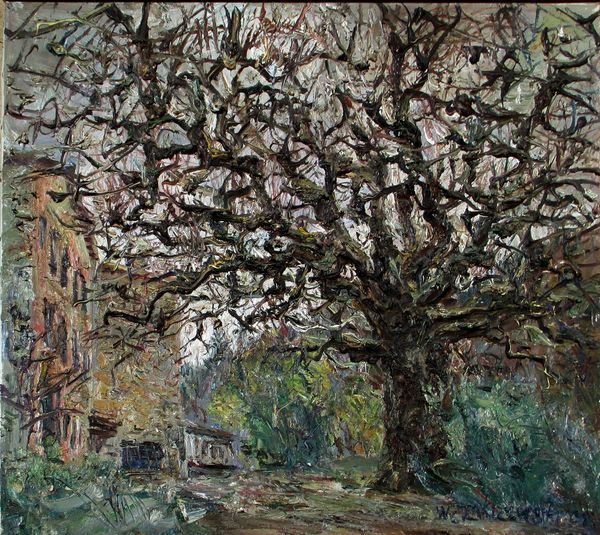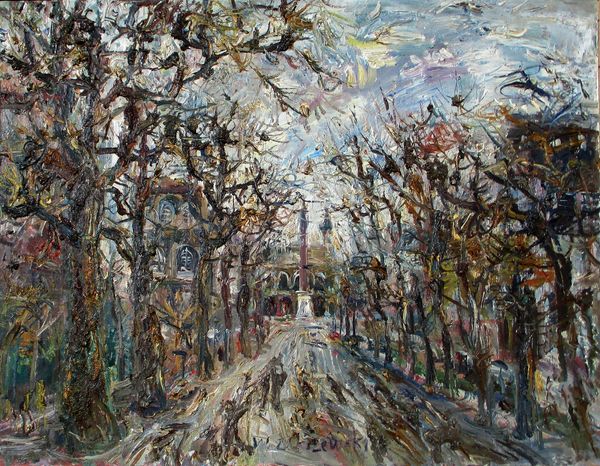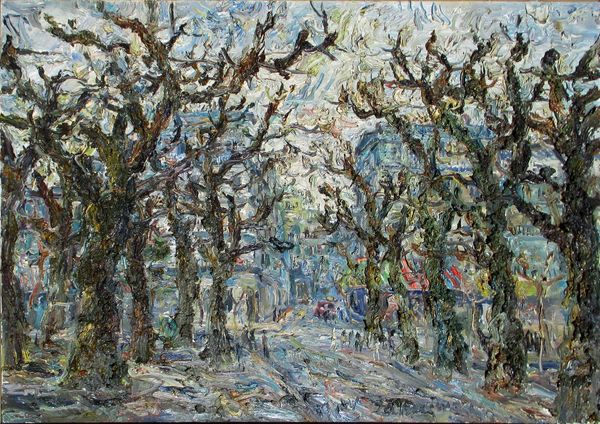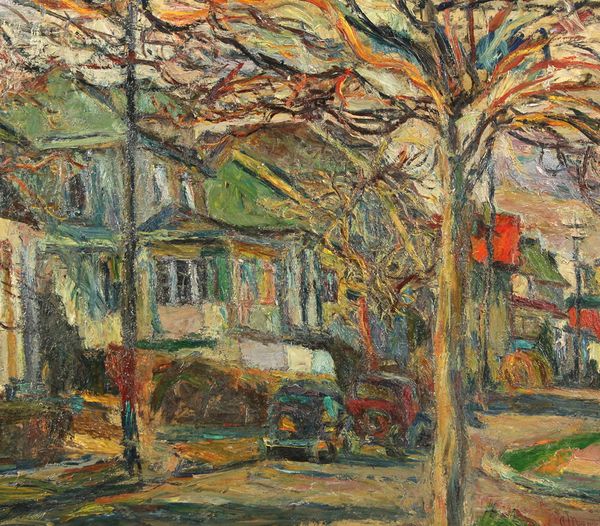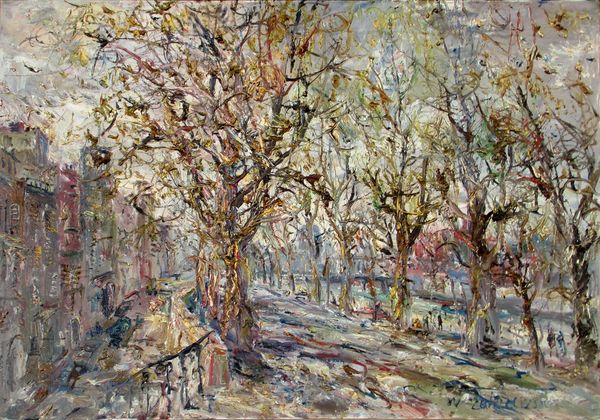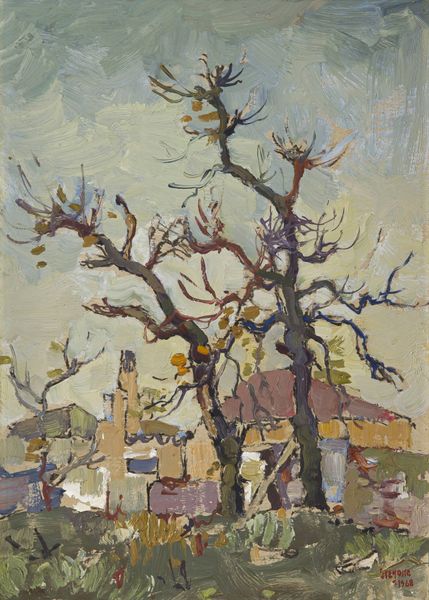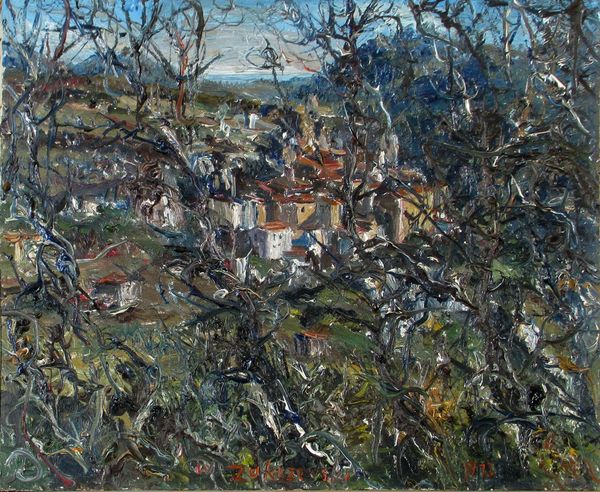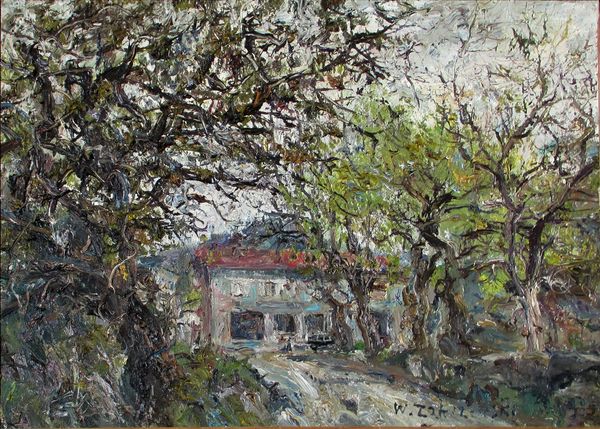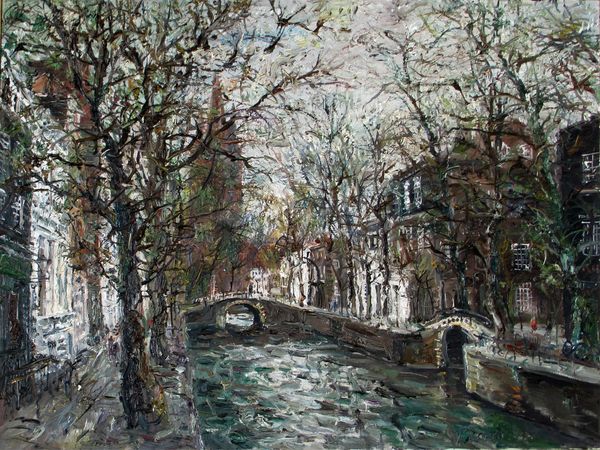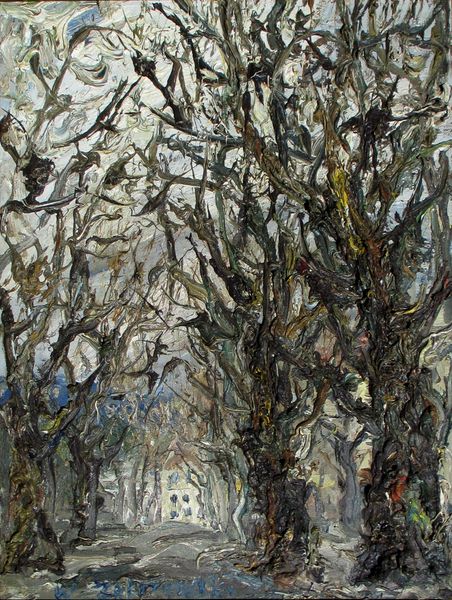
Dimensions: 50 x 70 cm
Copyright: Private collection copyright
Editor: We’re looking at “Ampus,” an oil painting by Włodzimierz Zakrzewski from 1982. It's a cityscape with prominent trees, rendered with a thick impasto technique. The colours are earthy but luminous, creating this almost vibrating texture across the canvas. What do you make of it? Curator: Well, immediately, I'm drawn to the sheer materiality of the paint. Zakrzewski’s use of impasto isn’t just about depicting the scene; it's about making the labour visible. Think about the physical effort involved in building up those layers of oil paint. The brushstrokes themselves become part of the content. Editor: That's interesting. It feels like more than just representing trees; it's almost a sculpting of them with the oil paint itself. Curator: Exactly! And it’s vital to consider the context. Zakrzewski painted this in 1982, when the boundaries between "high art" like painting and more traditionally 'craft' practices were being questioned. This piece actively dissolves those boundaries. Is it landscape painting, or is it a kind of sculptural relief? What kind of tools do you think that he used and what does it say about consumption and materials at that time? Editor: So, you’re suggesting it's not just a painting *of* something, but a commentary *on* the act of painting, the tools of painting, and the whole cultural context of art making itself? It reminds me that the oil paints must be bought. What’s interesting to me is what parts are more impasto and what elements aren’t and why. It changes everything from how the light works to where your eye wants to go. Curator: Precisely! The way he manipulates the paint implicates the whole process of artistic production and consumption. Consider, too, the support—the canvas. How does the texture of the canvas contribute to our reading of the piece? Does it feel planned, like someone bought quality material, or ad-hoc and cheap. All things to think about to connect art to historical conditions. Editor: I hadn’t thought about the canvas. Thank you. Now I'm seeing so many more layers to consider – both literally and figuratively.
Comments
No comments
Be the first to comment and join the conversation on the ultimate creative platform.
